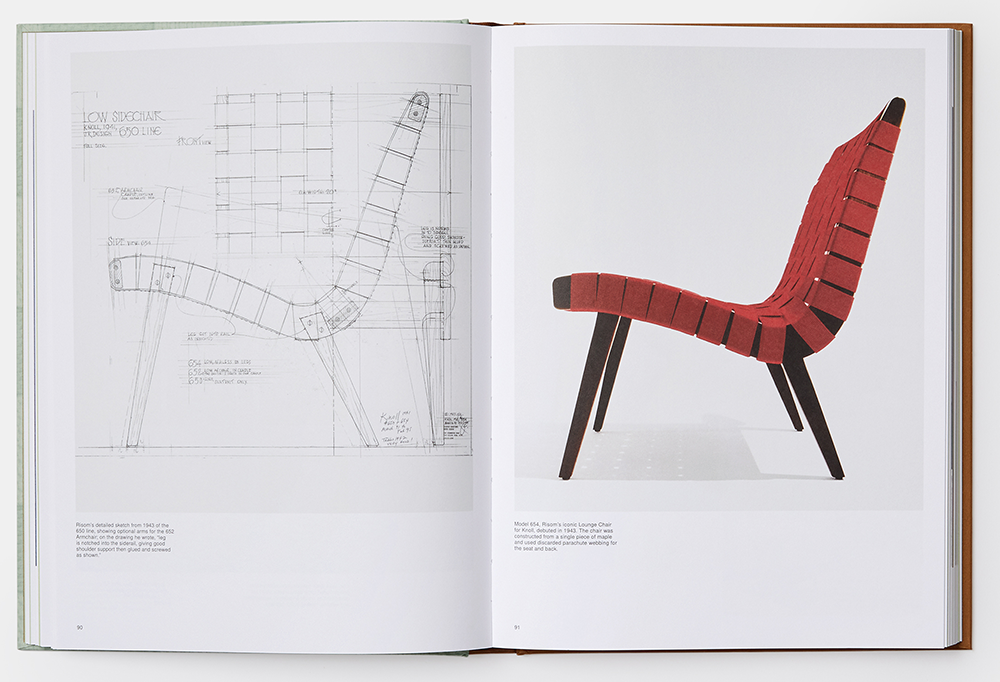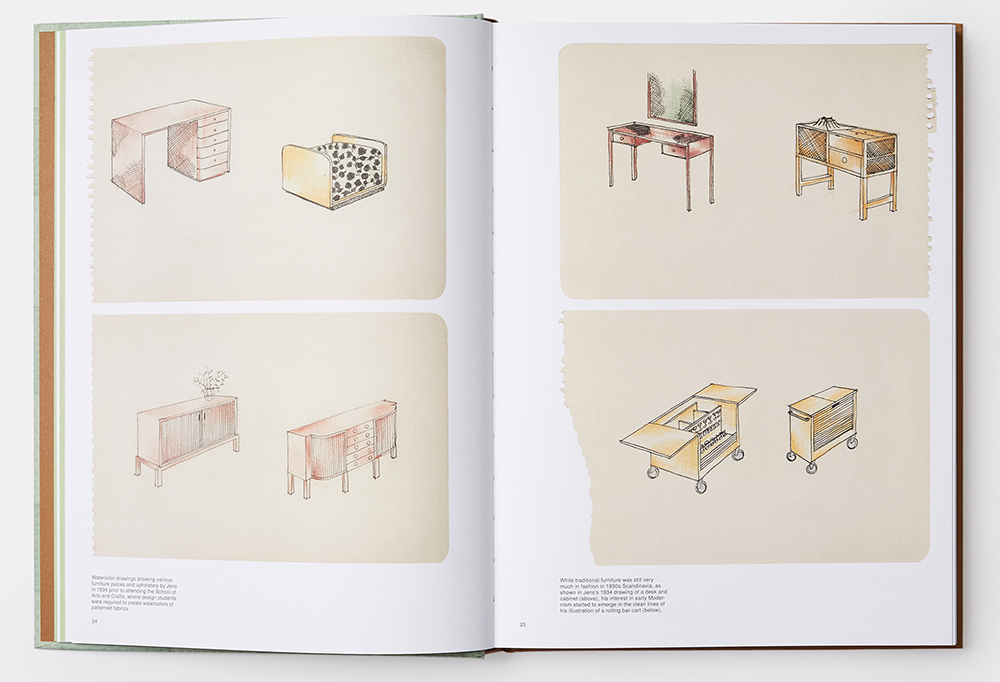
Cover image courtesy of Phaidon.
Editor’s Note: The following text and images are from Vicky Lowry’s new book Jens Risom: A Seat at the Table , out this week from Phaidon, and are reprinted with the permission of the publisher.

Jens Risom catalogs, 1960s. (page 129) Picture credit: © FORM archive/Jens Risom.
In the mid-twentieth century, as Modernism captured the imagination of Americans, Jens Risom was instrumental in revolutionizing the look of American living rooms and corporate offices with his clean-lined, Scandinavian-influenced furniture designs. He didn’t experiment wildly with materials like Charles and Ray Eames or innovate with sculptural forms like Alvar Aalto and Eero Saarinen. His approach was quieter—one that paid homage to the beauty of wood, the importance of craftsmanship, and the necessity for comfort.
At the height of Risom’s career, national publications reviewed each new collection. Full-page advertisements for Risom’s new pieces, shot by the celebrated fashion photographer Richard Avedon, ran in the front pages of the weekly New York Times Magazine. Risom had a gleaming Midtown Manhattan showroom and went on to buy factories in which to manufacture his furniture and fabrics with complete control, from the shape of the wood pieces to the finish of its upholstery. His furniture was sought after by architects and interior designers for its modernity. President Lyndon B. Johnson signed memorable legislation, including the 1964 Civil Rights Act, while sitting in a Risom chair. The designer’s novel prefabricated summerhouse on Block Island, Rhode Island was featured in the pages of LIFE magazine. And he was the youngest in a prestigious group of the country’s leading furniture designers—including Charles Eames, George Nelson, and Eero Saarinen—whose work was highlighted for its originality in Playboy. Risom ended up outliving all of these luminaries—indeed witnessing his own renaissance while continuing to produce desirable new furniture well into his ninth and tenth decades.

Model 654 Lounge Chair, for Knoll, 1943. (page 90-91) Picture credit: © FORM archive/Jens Risom.
And yet Jens Risom is not a household name in the same vein as Scandinavian compatriots such as Hans Wegner and Arne Jacobsen—although few of them eclipsed Risom’s design output and financial success. Circumstances in life—being drafted into the U.S. Army during World War II, for instance, just as his design practice was taking flight, and selling his furniture company when he was only fifty-six—coupled with a dogmatic, independent temperament, led to a series of unpredictable yet intriguing curves in Risom’s long professional career.
To read more, get your copy of Jens Risom: A Seat at the Table.

Watercolor drawings, 1934. (pages 24-25) Picture credit: © FORM archive/Jens Risom.
